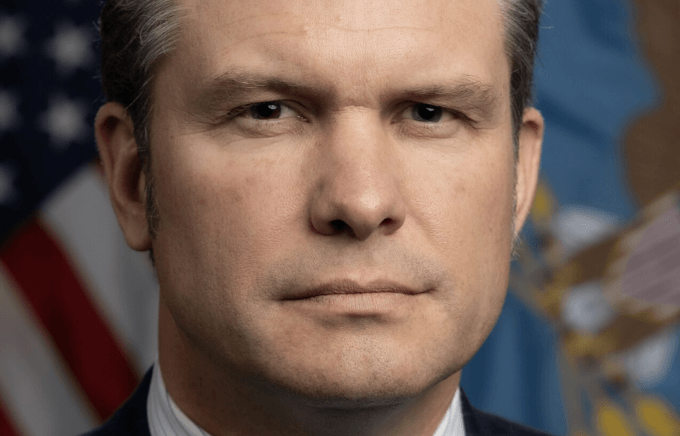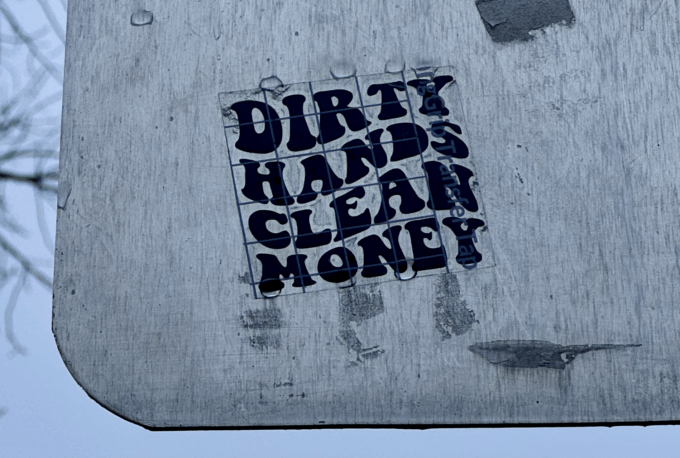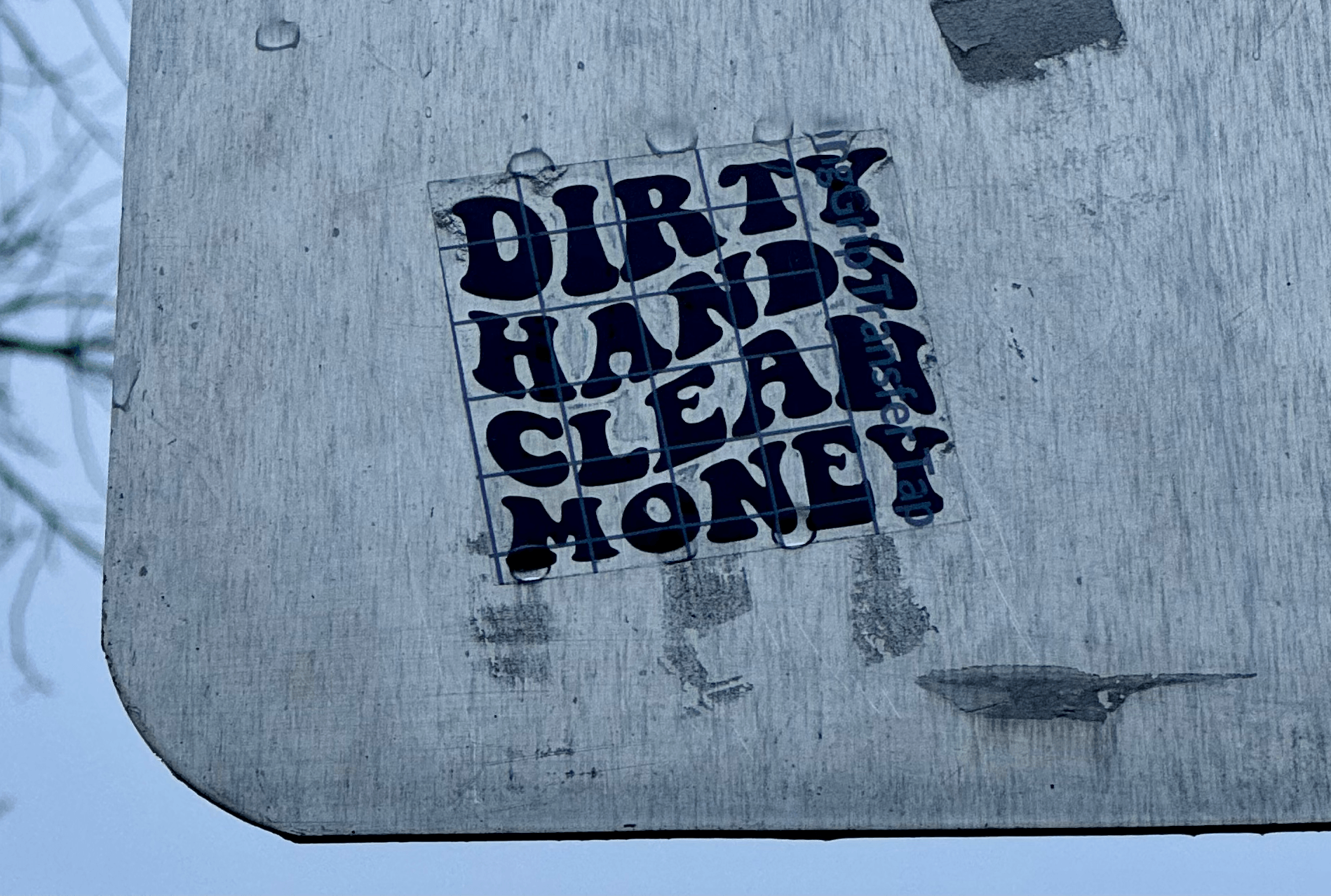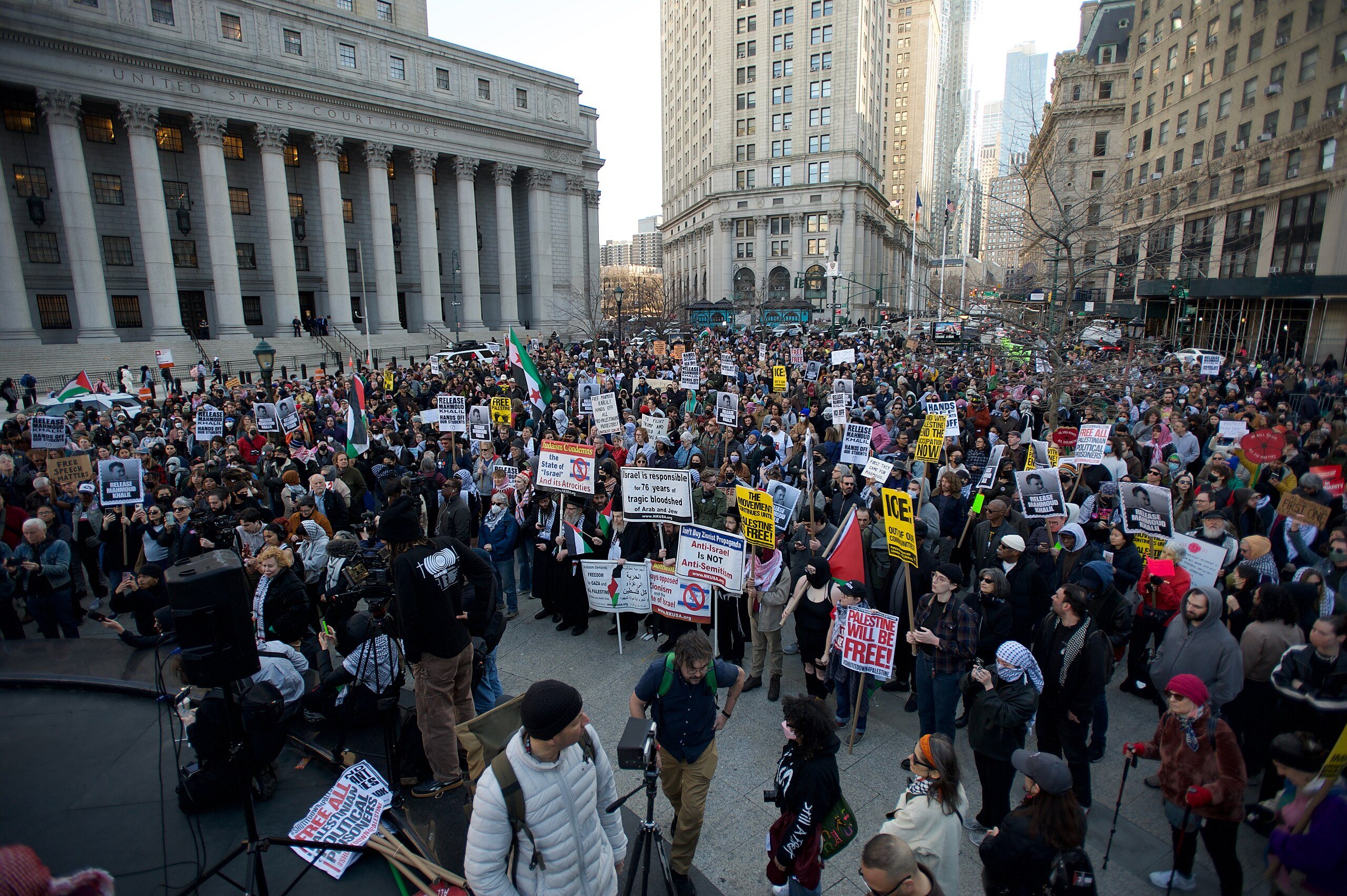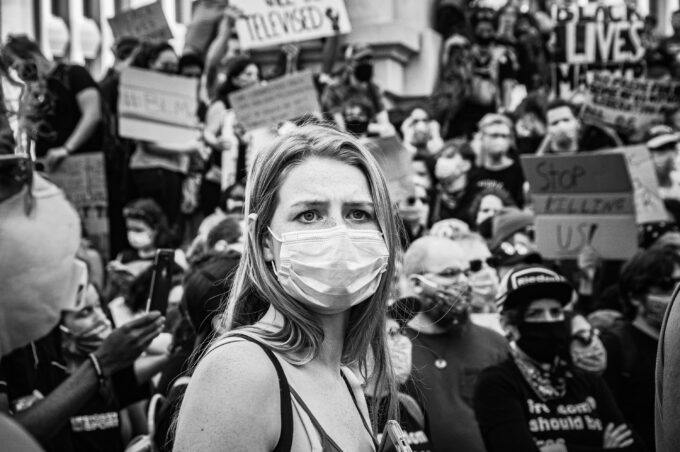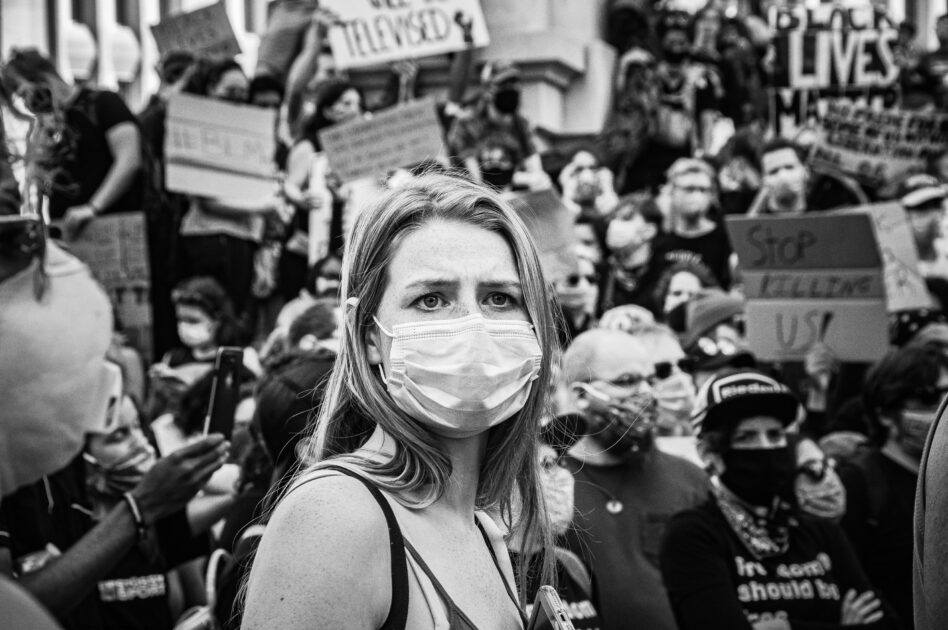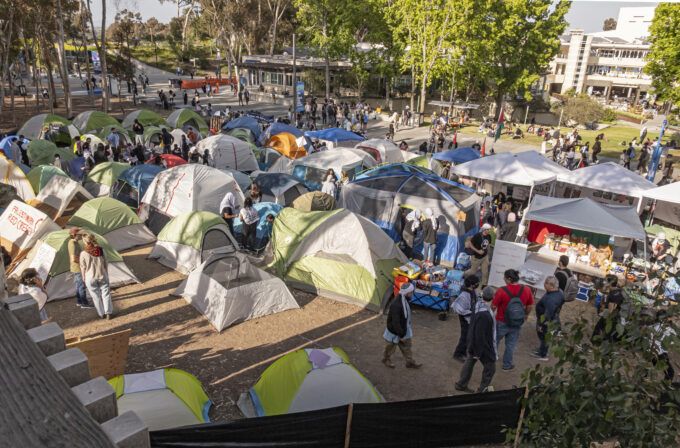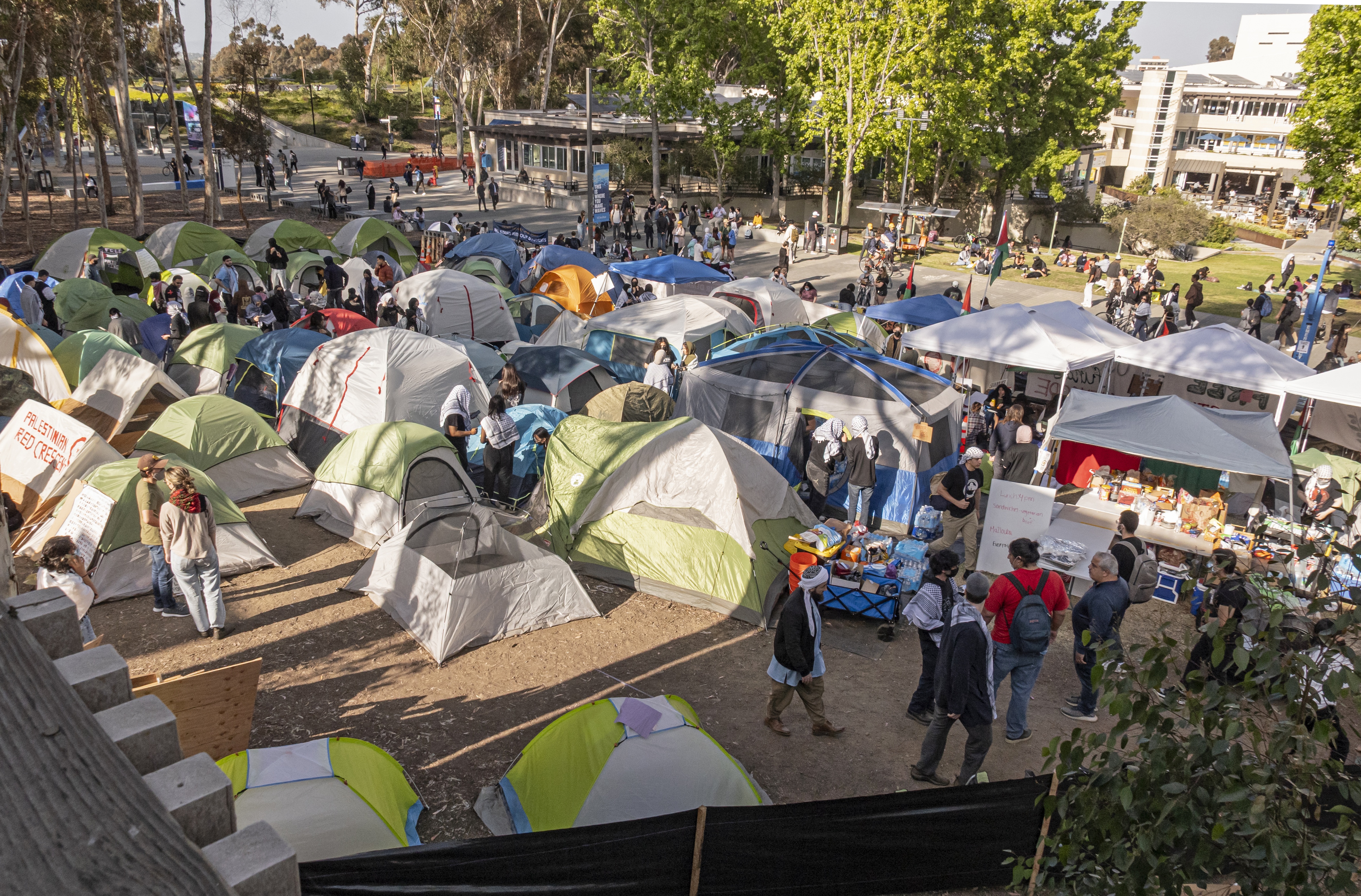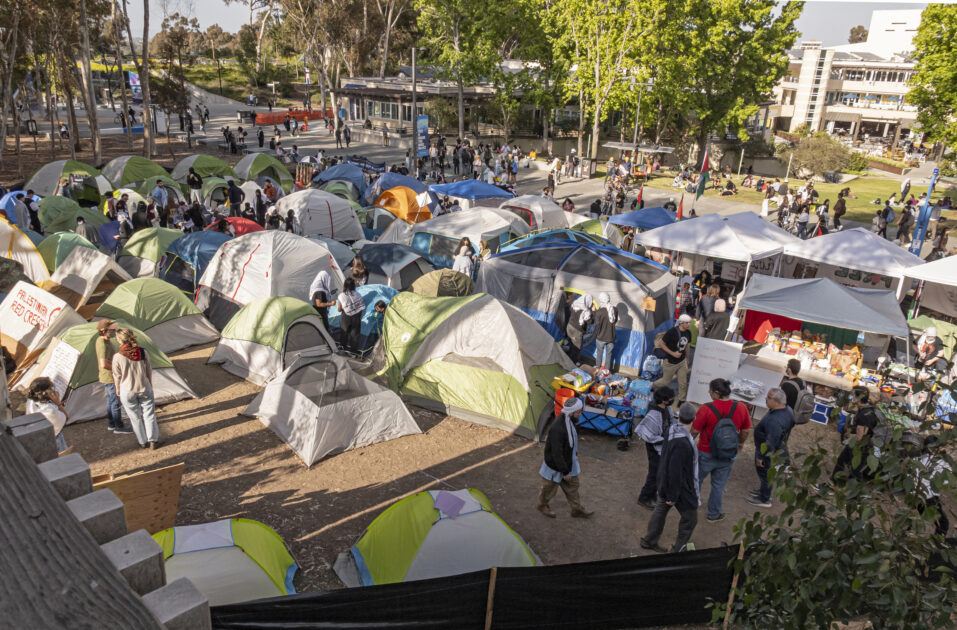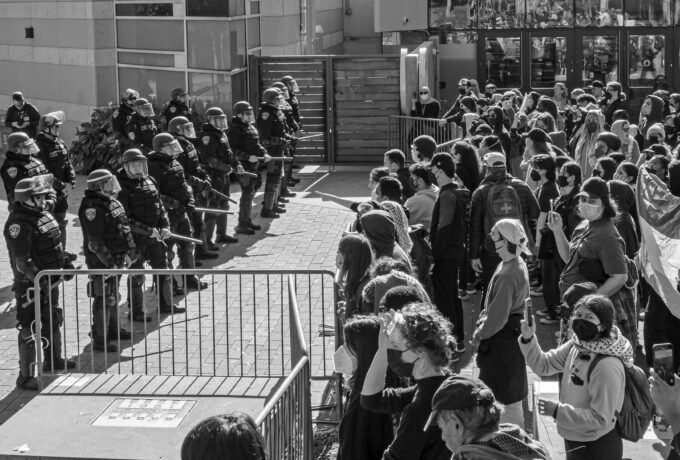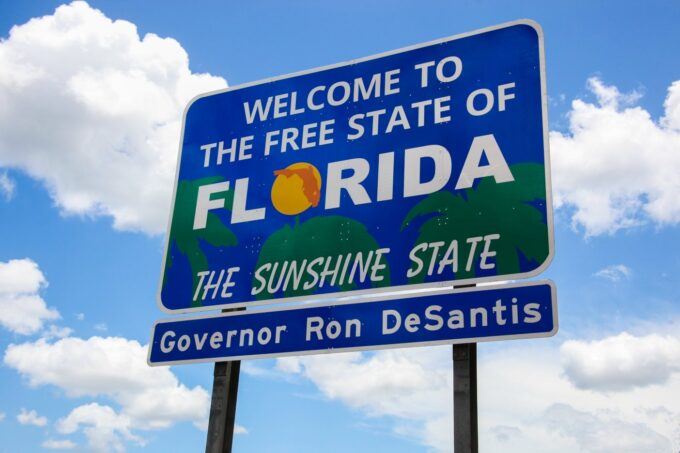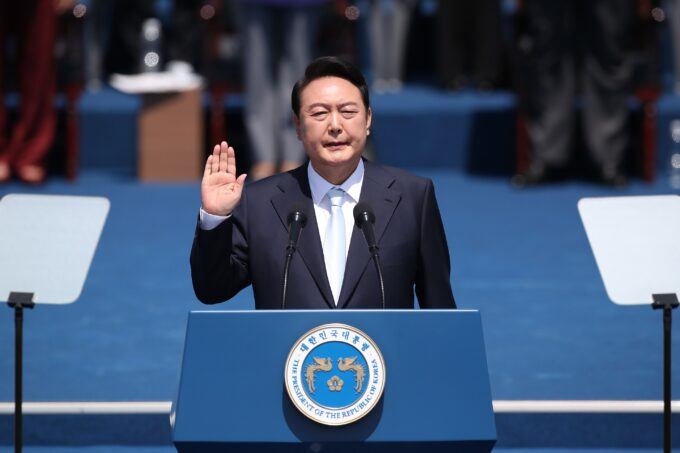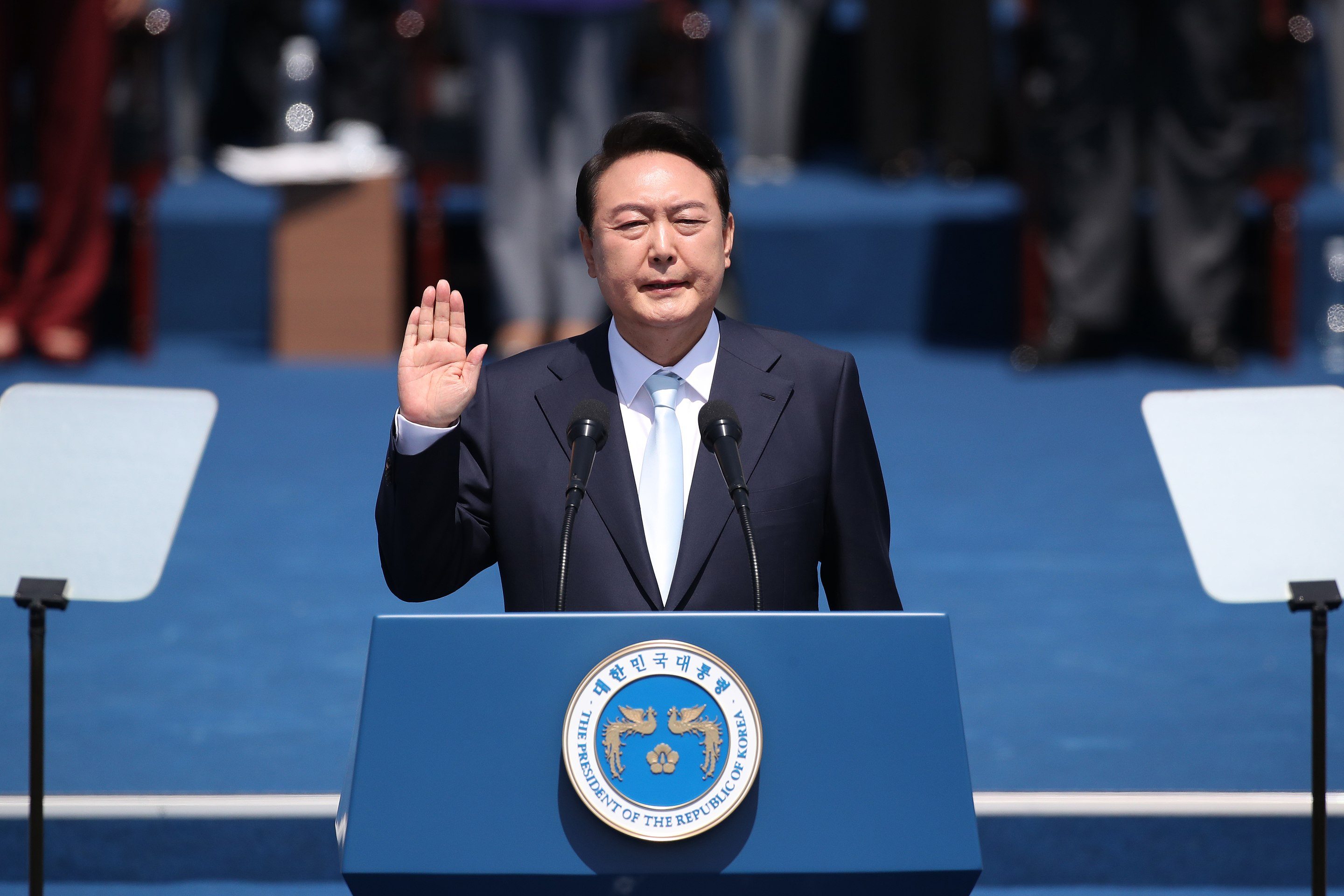





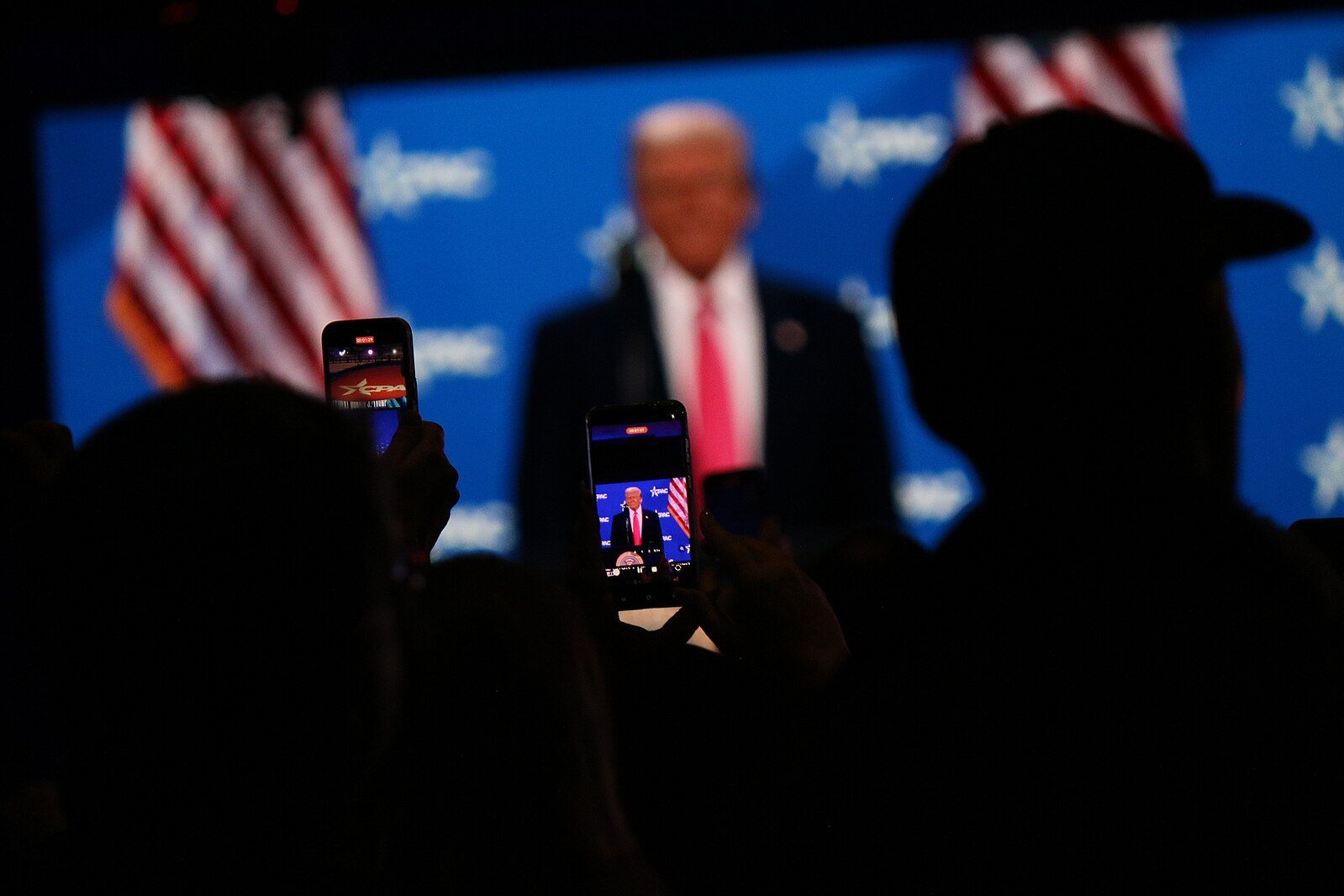























































“Nearly every federal agency in the US government could fall under the scrutiny of DOGE”. With these words on Fox News on February 7th, Donald Trump outlined the scope of DOGE – the Department of Government Efficiency – his administration’s planned overhaul of federal institutions, with Elon Musk at its helm. Within days, the administration has moved to consolidate control over key security apparatus, with the Senate confirming former Democrat turned Trump loyalist Tulsi Gabbard as director of national intelligence and Kash Patel, author of “Government Gangsters,” as FBI director[1]. Democratic Senator Chris Murphy characterized these developments as “the most serious constitutional crisis the country has faced certainly since Watergate,” warning of a “billionaire takeover of government.”[2]
Yet this radical transformation of American governance, far from being an impromptu imitative, represents the culmination of nearly a century of meticulously laid groundwork by conservative elites. Drawing from the previously unexplored McCune archives at Columbia University (NY), this investigation reveals how, since the 1930s, a powerful alliance of industrialists, conservative foundations, and far-right ideologues has progressively worked to infiltrate institutions, reshape governmental structures, and neutralize democratic opposition.
Donald Trump’s inauguration in January 2025 marks the culmination of this counter-revolutionary project, with an unprecedented offensive aimed at dismantling the traditional federal administration in favor of a streamlined structure populated by his loyalists. Recent analyses have begun to grapple with this transformation of American governance from different angles. In their February 2025 Foreign Affairs piece “The Path to American Authoritarianism” Steven Levitsky and Lucan A. Way notably highlight how the Heritage Foundation has invested millions to prepare “an army of up to 54’000 loyalists to fill government positions.”[3] While their analysis astutely identifies mechanisms of state capture, it perhaps underestimates how wealth concentration and corporate influence have historically enabled rather than resisted democratic erosion. Similarly, Mike Brock’s investigation “The Plot Against America” (February 2025) reveals how contemporary tech elites are working to shift power “from democratic institutions to technical systems controlled by a small elite.”[4] Yet these vital contemporary accounts capture only the latest chapter of a much longer historical process, one whose roots stretch back nearly a century.
Wesley McCune’s work provides an indispensable historical record of Trump’s actual counterrevolution effort, through his founding of Group Research Inc. (GRI) in 1962. Prior to establishing GRI, he had served in several government agencies and as assistant to both the Secretary of Agriculture and President Truman (1945-1952). Under his leadership, the GRI compiled the largest documentary collection ever assembled on conservative networks and their funding[5]. These archives expose, through thousands of pages of evidence, how the conservative and fundamentalist Christian right methodically worked to infiltrate institutions, reshape governmental structures, and neutralize democratic opposition – prefiguring with remarkable accuracy the very transformation we are witnessing today[6].
A strategy Decades in the Making
The roots of this counter-revolution can be traced back to the 1930s. In reaction to Franklin D. Roosevelt’s New Deal, influential industry captains from the banking, chemical, and steel sectors perceived state intervention as an existential threat. Their opposition crystallized around major figures: Alfred P. Sloan (president of General Motors) and Irénée DuPont (Arms and Powder manufacture), who became the principal architects of the “American Liberty League” in August 1934[7]. Their design was unequivocal: they promoted a model, inspired by fascisms in Europe, where the United States would be governed according to a corporatist and non-democratic logic, under the guise of “deregulating” the economy[8].
This vision quickly found concrete expression in an attempted coup that presaged the League’s formal establishment[9]. In his testimony before the McCormack-Dickstein Committee during a secret executive session in New York City on November 20, 1934, General Smedley Butler exposed what became known as the “Business Plot” – a failed conspiracy by wealthy industrialists to overthrow President Roosevelt. The plotters, who ironically styled themselves as a “Society to maintain the Constitution”, had envisioned installing a “Secretary of General Affairs” who would effectively usurp the President’s executive powers under the guise of administrative efficiency[10]. While the coup attempt failed, these same industrialists quickly redirected their efforts toward institutional capture, manifesting their financial power in the creation of numerous foundations aimed at implementing their vision of societal restructuring[11].
The post-war period ushered in an acceleration of this program[12]. A network of entrepreneurial foundations – Mellon, Scaife, Lilly and Richardson, Olin, supported by the DuPont and Koch dynasties – orchestrated an unprecedented effort to undermine the federal state structure, operating under the cover of Cold War anti-communist polices initiated immediately after the war[13]. These foundations established and solely funded dozens of political and research institutes, enabling them to obtain intellectual legitimacy for their political-economic vision[14]. This influence remains pervasive today through these still-active institutions and their successors, as illustrated by Timothy Mellon’s $50 million support to Trump’s Super PAC, revealed by the press in 2024[15].
This design first materialized through the creation of the American Enterprise Association (AEA) in 1943, which would later become the American Enterprise Institute (AEI) in 1962. That same year, the AEI spawned one of its key affiliates: the Center for Strategic and International Studies (CSIS) at Georgetown University (Washington)[16]. A decade later, the Heritage Foundation (1973) emerged, backed by resources from the J. Coors conglomerate, the Scaife Family Trust, the Noble Foundation, and the John M. Olin Fund.
The far-right John Birch Society (JBS), founded in 1958, served as a catalyst for the radicalization of the conservative base by cultivating populism as an essential ingredient of this long-planned revolution[17]. As historian Matthew Dallek’s work demonstrates, the JBS through its media network and forums led by Fred Schwartz and Clarence Manion (The Manion Forum), would find its contemporary echo in Alex Jones “Infowars” channel, an early Trump supporter. This progression shows how extremism became increasingly mainstream within conservative circles[18]. These networks successfully nurtured and sustained an ultranationalist momentum built on victimhood narratives that aligned with white nationalist and supremacist ideologies. This movement laid the groundwork for what would become the “Moral Majority” in 1979, founded by televangelist Jerry Falwell Sr., which achieved a powerful synthesis of conservative political activism and religious fundamentalism in their shared opposition to Democratic progressive policies.
An essential component of this strategy, very early on, involved creating civic institutions capable of shaping future leaders through youth movements. The Young Americans for Freedom (YAF), associated with William F. Buckley and the JBS, established itself as both an ideological training ground and a vector for conservative activism. Operating within cultural institutions, colleges, universities, and public spaces, the YAF conducted numerous campaigns and demonstrations, drawing inspiration from their intellectual mentors Friedrich Hayek and his successor Milton Friedman[19].
From Nixon to Reagan: The Rise of the Conservative Power
The conservative movement’s ascendancy, which would give rise to the New Right, underwent a decisive evolution in the 1960s. While Barry Goldwater (1964) and George Wallace’s (1968) presidential bids failed, it was Richard Nixon, a former Goldwater supporter, who ultimately emerged as the movement’s hope for establishing a bulwark against the left. During this period, conservatives innovated their communication methods, particularly through direct mail techniques, pioneered by Richard Viguerie, former executive secretary of the YAF.
Direct mail became the New Right’s central organizing tool, proving to be a formidable instrument for both mobilization and fundraising. Viguerie deployed it to structure a network of conservative donors and raise funds for multiple organizations: the National Conservative Political Action Committee (NCPAC), Paul Weyrich’s Committee for the Survival of a Free Congress, and Senator Jesse Helms’ Congressional Club. Prefiguring modern targeting algorithms, this system channeled resources toward emblematic conservative causes: school prayer, campaigns against gay rights and abortion, opposition to progressive cultural policies, and support for armed guerilla movements. In the 1990s and 2000s, these same networks would serve as vectors for attacks against Bill Clinton and later Barack Obama, becoming efficient conduits for spreading conspiracy theories about both presidents.
Under Nixon’s presidency, and with the patronage of his Secretary of Defense Melvin Laird, the movement’s key figures steadily infiltrated high offices. Among these key appointments were David Abshire, who would later direct CSIS (1983-1986), William Baroody Jr. who led AEI (1978-1987), and Ed Feulner who headed the Heritage Foundation (1977-2013, then 2017-2018). Mr. Feulner would later join Trump’s transition team in 2016, helping shape the “America First” foreign policy agenda[20].
Following setbacks in direct political action after the Vietnam war policy failures, conservative forces reoriented their approach by strengthening their ideological apparatus. The social context proved propitious: mounting pressure from civil rights and abortion rights movements fostered an effective synthesis between ultraconservative political factions and Christian religious groups, united in their opposition to what they perceived as a “Marxist drift” threatening America’s soul. This period marked what some observers would later identify as the beginning of parliamentary democracy’s decline in America, though few recognized it at the time.
William J. Baroody, who alongside Milton Friedman had orchestrated Barry Goldwater’s 1964 campaign, became a leading advocate for subordinating democratic processes to capitalist imperatives during this period of social upheaval. The movement achieved its first major success by supporting Ronald Reagan’s bid for the California governorship, which served as both testing ground and steppingstone to the presidency. Joseph Coors, the Heritage Foundation’s principal donor, became Reagan’s personal advisor. Soon after, entire segments of the Californian State bureaucracy were targeted for privatization, beginning with the electricity market – a process that effectively delegated substantial state prerogative to business interests.
This vision of a large-scale culture war found its definitive expression in Baroody’s pivotal address to the Business Council in Virginia in October 1972:
“To the extent that public opinion is hostile to business, one can expect – at minimum – that the public policy climate will make their operation increasingly difficult, and in some cases, compromise their survival. One can go further and assert that, to the extent public opinion is hostile to the institutional framework of a free society, there is then genuine cause for concern about the very viability of that free society.”Adding further: “In this war of the minds of men – and it is an unrelenting war – at stake is the institutional framework of the free society itself.” Baroody concluding: “In brief, America’s free society and economy cannot survive…if you fail to recognize the imperative necessity to begin mustering, in the media and in the Nation’s educational institutions, the necessary resources to counter the propaganda supremacy now held by the adversaries of our free enterprise system – a supremacy I regret to say, all-to-often sponsored and subsidized by the very industries and companies that are under attack.”[21]
Convinced of society’s vulnerability to “internal enemies,” these actors believed businesses must intervene forcefully to shape public opinion in favor of “market freedom”. Simultaneously, New Right conservatives worked to institutionalize surveillance and repression of movements deemed subversive. They built upon the precedent of the House Un-American Activities Committee (HUAC), active between 1938 and 1975, where Richard Nixon and Ronald Reagan had cut their political teeth[22]. After HUAC’s decline, this approach of public tribunals and presumption of guilt continued through the Senate internal Security Subcommittee, amplified by the alarmist rhetoric of pseudo-patriotic movements, such as the Committee on the Present Danger (CPD). These organizations systematically cultivated a climate of paranoia regarding communist and Marxist subversion, which would prove instrumental in legitimizing increasingly stringent security and anti-terrorist policies in the public eye – patterns that are being deployed as of this writing in the early days of the new Trump Administration, in the systematic dismantling of so-called diversity, equity, inclusion (DEI) programs across federal institutions, including the purging of high-ranking military officials under manufactured pretexts, most notably the dismissal of Joint Chiefs chairman Gen. Charles Q. Brown.
Through expanded direct mail campaigns and sophisticated media strategies, these organizations evolved into vectors of political paranoia promoting conspiracy theories that would help legitimize draconian security and anti-terrorist policies across American society. This deliberately fostered climate of fear facilitated the adoption of the Huston Plan, a sweeping covert program of surveillance, infiltration, harassment, and intimidation targeting political opponents.
Tom Charles Huston, an experienced figure and leader in the YAF, developed this blueprint under Richard Nixon’s aegis. While its exposure during the Watergate scandal (1972-1974) temporarily halted its implementation, it marked an intensification of executive power, with the FBI functioning essentially as a political police force, drawing troubling parallels to the German Gestapo[23]. The unprecedented nature of this development was captured by historian Frank J. Donner who noted that “For the first time in our history a chief executive had expressly authorized a political police structure with a range of powers in conflict not only with established law but with the provision of the Fourth Amendment as well.”[24]
Despite a brief post-Watergate setback, the Reagan and Bush Sr. administrations embraced and empowered these organizations, viewing them as vital to their power structure. A telling symbol of this entrenchment emerged when Richard Mellon Scaife secured a position on the U.S. Advisory Commission on Public Diplomacy (USACPD), overseeing the United States Information Agency (USIA), the body responsible for American strategic communication and propaganda abroad.
Strategic think tanks, particularly the CSIS, emerged as the primary architects of “terrorism” studies, mobilizing public opinion through research that predominantly reflected U.S. strategic interests. Their work proved instrumental in garnering public acceptance for expanded “national security” policies and shaping the judicial framework of the anti-terrorism apparatus. Under Reagan’s two terms (1981-1988), surveillance and control became further institutionalized, notably through Executive Order E.O. 12333 (Dec. 4, 1981), which authorized extensive information gathering and enforcement measures against U.S. citizens deemed antagonistic to national security interests[25].
The Young Americans for Freedom (YAF) functioned both as precursor and prototype for ideological youth movements, emerging despite the haunting memory of Hitler’s Jugend experiment. Over two generations, the YAF methodically prepared the ground for this revolution, claiming to restore moral order[26]. Their campaign exerted mounting pressure on media outlets and academic institutions while challenging the right of free speech. Trump’s campaigns (2016, 2024) benefited substantially from their active support networks.
Over two decades, the conservative movement, guided by its most radical elements, gained momentum through unprecedented support from the US Chamber of Commerce, JBS and American Legion, and an extended network of paramilitary factions – the later proliferating due to continuous U.S. military engagements abroad. Under the banner of the “Moral Majority”, an alliance solidified between the Christian nationalist and libertarian politicians[27]. During a political action seminar in Dallas, Texas, in August 1980, Paul Weyrich articulated their vision: “We are talking about Christianizing America. We are simply talking about spreading the gospel in a political context,” This declaration would find its echo in Trump’s 2016 campaign promise that “Christianity would have power”[28].
Toward the end of Reagan’s presidency, hardliners within the Heritage Foundation grew disillusioned with his failure to fully implement their “institutional reform program” (known as Mandate I and II) and what they saw as his betrayal of their vision to remake America great again. In response, they adopted a more subtle approach: rather than focusing solely on capturing the presidency, they would systematically transform government from within, targeting both lower-level offices and high courts to achieve a fundamental redistribution of power through strategic redistricting.
This transformation accelerated under Newt Gingrich, founder of the “Conservative Opportunity Society” (COS) in 1983, who ascended to Speaker of the House following the Republican takeover of the lower Chamber of Congress in 1994 – their first such victory since the interwar period. In 1989, Gingrich declared before Congress: “Liberals have declared open war against our constitutional system of government.”[29] Yet this accusation masked his own agenda ; he was actively orchestrating precisely what he accused his opponents of doing – launching an all-out assault on democratic institutions, methodically preparing the ground for a leader who would embrace this monumental task, accepting the risk, that had nothing to lose : Donald Trump.
Gingrich emerged as one of Trump’s most steadfast and influential though behind-the-scenes supporters well before his first presidential bid[30]. His 2022 book titled “Defeating Big Government Socialism, Saving America’s Future” reveals the persistence of these long-standing themes: “If the United States loses its patriotic commitment to being a united nation, there is a real danger that our enemies will manipulate and finance radical Marxist factions to tear our country apart and leave us defenseless.”[31] As a historian-turned ideologue, Gingrich serves a vital bridge between the New Right and Trump’s movement, frequently articulating Trump’s positions through his platform on Fox News. Eric Trump acknowledged this role in his preface to Gingrich’s 2017 book about Donald Trump, noting: “Newt was able to perfectly articulate my father’s beliefs.”[32]
Historian Julian E. Zelizer draws a compelling parallel between Gingrich and Joseph McCarthy, observing: “His virulent political style became the echo chamber of the Republican Party.”[33] However, Zelitzer identifies a crucial distinction: while McCarthy was ultimately marginalized for his excesses, Gingrich succeeded in embedding his ideas within mainstream conservative thought. He championed some of the most extreme policies that Trump would later adopt, including the constructing of a wall between Texas and Mexico. More broadly, Gingrich’s ascendance coincided with conservative forces’ readiness to flex their institutional muscle – no longer content to merely defend the system but determined to bring it down.
The Heritage Foundation’s influence extended well beyond U.S. borders. The GRI archives reveal how, beginning in the 1970s, it channeled funds to far-right groups and organizations across Europe that shared its anti-welfare state stance and free-market absolutism. This transnational network encompassed the Institute for European Defense and Strategic Studies (IEDSS), the International Freedom Fund Establishment (IFFE), the Hanns Seidel Foundation in Germany, and the Club de l’Horloge in France (renamed “Le Carrefour de l’Horloge” in 2015), which aligned closely with the far-right National Front party[34].
During the first decade of the “Global War on Terror” (GWOT) launched September 20, 2001, these networks mobilized their full resources. The American Enterprise Institute (AEI) emerged as a particular nexus of hawkish influence, bringing together figures such as Richard Perle, who presided over the quasi-governmental Defense Policy Board; Irving Kristol, the architect of neoconservatism; Michael Ledeen, a former Reagan advisor advocating military action against Iran; and John Bolton, who personified the fusion between hardline conservatives and the neoconservative interventionist agenda[35].
Under George W. Bush’s presidency (2001-2009), the interweaving of business interests, lobbyists, industry-funded think tanks, and the Republican Party reached unprecedented level of complexity[36]. The military sphere became a particularly fertile ground for ideological propaganda. The return of ROTC programs to college campuses, all over the U.S. signaled conservative foundations growing capacity to leverage military education for advancing their worldview and their conviction that democratic institutions had failed. The military’s “Operation Paperback” which distributed books to the troops included many of them from New Right’s rank, such as Mark R. Levin, President of the Legal Foundation, whose “Plunder and Deceit, Big Government’s exploitation of young people and the future” (2015) aspired to generate a “new civil rights movement, one that will foster liberty and prosperity and cease the exploitation of young people by statist masterminds.”[37]
The emergence and ferment of the Tea Party movement in February 2009 signaled a decisive shift in the conservative takeover of the Republican Party (GOP), exploiting the aftermath of the financial crisis to prepare the way for their chosen standard-bearer, Donald Trump. The governing circles of these foundations identified him as uniquely capable of executing their long-awaited rupture with the established order. Within the movement’s religious base, many viewed his ascendance through a messianic lens, perceiving him as divinely ordained to lead not just America but the World[38].
Trump’s explicit embrace of the “America First” movement’s heritage – characterized by historians as profoundly pro-fascist – came during his landmark speech at the Center for the National Interest (Washington D.C.) on April 27, 2016[39]. While his first term served as a trial run for this new doctrine of integral nationalism, his return to power in January 2025 initiated the fulfilment of long-held ambitions: rejecting international law, withdrawing from multilateral treaties, and reorienting U.S. foreign policy toward aggressive economic warfare while marginalizing traditional allies.
Project 2025: The institutionalization of an Authoritarian Model
Project 2025, dubbed the “mandate for leadership”, emerged as the blueprint for Trump’s return to power, despite early attempts by some campaign advisers to distance themselves from its extreme implications[40]. This imitative marks the culmination of the conservative counter-revolution[41]. Most appointees to key positions in the new administration maintain direct or indirect ties to the Heritage Foundation and its affiliates[42].
This “New Mandate”, heir to previous versions from 1980, 1984, and 1988 took concrete form upon Trump’s inauguration last January. His administration, with Elon Musk’s support and advice, has promptly begun purging institutional opposition through mass dismissal of civil servants, wielding existing legal mechanisms to suspend democratic institutions and procedures by simple executive order, neutralizing remaining checks and balances. While ignoring congressional budget prerogatives and judicial independence, the administration has realized McCune’s dire predictions: “The first victims of these measures,” he wrote, “are minorities, union movements, and proponents of multiculturalism.”
The first cornerstone of this transformation centers on the wholesale removal of senior civil servants, replaced by hand-picked loyalists, coupled with the dismantling of agencies and offices dedicated to social services, education, environmental protection, and international aid like USAID – a pillar of U.S. international development policy since its creation under John F. Kennedy, with roots in earlier progressive efforts such as the New Deal and the Marshall Plan (ERP programs). This foundational component manifests through a cascade of recent executive orders targeting federal-level Diversity, Equity and Inclusion (D.E.I.) programs, especially affecting cultural and educational institutions.
Within this comprehensive unfolding offensive, higher education stands as a priority target of the radical right. Trump explicitly declared his intention to “take back” universities from “Marxist maniacs,” while his Vice-President J.D. Vance openly branded them as “enemies”. A position reflecting both his venture capital background and his longstanding alliance with Silicon Valley power brokers, such as Peter Thiel and Elon Musk[43]. In echoing Baroody and Gingrich’s martial previous rhetoric, Project 2025 envisions establishing an “American Academy,” marketed as a free and “strictly non-political” online university, funded through dramatic increase in taxes on existing university endowments[44]. This initiative serves a dual purpose: weakening traditional institutions while creating an alternative under strict ideological control.
The second cornerstone of this design implements expansive deportation measures targeting resident aliens labeled as “criminal illegal,” while simultaneously advancing the criminalization of opposition groups. Internal security agencies, particularly Homeland Security’s ICE, established in response of 9/11 and subsequent antiterror policies, are being transformed into auxiliary forces supporting the FBI and CIA, now operating from shared databases powered by algorithms and AI from major U.S. technology companies. In February 2025, ICE launched an unprecedented surveillance program aimed at monitoring “negative sentiment” about the agency across social media platforms, using artificial intelligence to identify and track not just threats but any form of criticism, while collecting extensive personal data on targeted individuals[45].
True to their historical role documented by the GRI, the Heritage Foundation, American Enterprise Institute (AEI), and Federalist Society continue to provide the intellectual framework and support for these measures[46]. A persistent tension between state control and deregulation remains visible in their arbitration between institutional repression and privatization of state functions. The paradox is striking: these organizations now advocate for forms of political authoritarianism that mirror exactly what they once accused their enemies of promoting.
The systematic implementation of this New Right counter-revolutionary “master plan” follows patterns reminiscent of, especially Nazi Germany between 1934 and 1939. By combining the systematic erosion of checks and balances, criminalizing political opposition, and institutional reorganization based on loyalty criteria according to loyalty criteria, the current administration materializes a model that Wesley McCune identify as an underlying tendency in American society as early as the 1950s.
The fate of the National Endowment for Democracy (NED) in February 2025 illustrates the apparent contradiction – but the underlying logic of this institutional transformation. Created under Reagan in 1983 and historically supported by the Republican establishment, the organization found itself abruptly cut off from Treasury funds following Elon Musk’s attacks branding it an “evil organization that needs to be dissolved,” The telling silence of traditional Republican figures, including those serving on its board like Senator Todd Young, suggests this dismantling is part of a broader strategy : the intent to transfer traditional American public diplomacy functions to private actors, particularly tech giants[47]. This reconfiguration, far from being a mere “purge” marks a potential transition from institutional soft power to a model where American influence abroad will increasingly be exercised through social media and digital platforms – giving precedence to private corporations over pseudo-government agencies.
The GRI archives holds a Congressional session report from 1953, at the height of McCarthy-era anti-communist fervor, analyzing factors behind fascism’s emergence and its potential presence in the U.S. According to experts at the time, the key factors weren’t those typically highlighted in Western textbooks, but rather the deliberate creation of a “corporatist state” through “social demagogy” capable of gradually subverting republican institutions[48]. A 1965 Group Research Inc. report issued a prescient warning: “One of the most dangerous aspects of fascism is that it advances in small steps, under the pretext of efficiency and reform.”[49]
That same year, historian Richard Hofstadter, in his seminal essay “The Paranoid Style in American Politics”, offered a crucial insight into this dynamic, noting that “a fundamental paradox of the paranoid style is the imitation of the enemy.” He observed how this “paranoid disposition” serves to “mobilize into action chiefly by social conflicts that involve ultimate schemes of values and that bring fundamental fears and hatreds, rather than negotiable interests, into political action.” His analysis of what he termed the “pseudo-conservatives”, particularly the Goldwaterites, precisely anticipated the rhetorical and mobilization patterns that would later define Trump’s MAGA movement[50].
A Decisive Turning Point for American Democracy
The possibility of the collapse of democratic institutions results from a long process. From the first organized attempt to seize power by force in 1933, to the current mandate given to E. Musk and his Department of Government efficiency (DOGE), a consistent pattern emerges: the systematic use of private wealth and corporate efficiency models to restructure federal governance, ultimately preparing the ground for oligarchic rule.
The positioning of Russell T. Vought to head the Office of Management and Budget (OMB), a U.S, executive agency responsible for developing the federal budget, overseeing agency performance, and ensuring regulatory and fiscal efficiency, illustrate the uncompromising nature of their strategy. As one of the main “Project 2025” architects, Vought’s statement about federal civil servants reveals their stark worldview: “We want them to wake up in the morning not wanting to go to work because they are increasingly seen as the bad guys.”[51] exemplifying their simplistic division of the world is divided between the “good guys” and “bad apples”.
The designation of loyalists to key security positions further exemplifies this transformation of federal institutions. The Senate’s confirmation of Tulsi Gabbard as director of national intelligence and Kash Patel as FBI director demonstrates how personal loyalty has become the primary qualification for leadership roles in critical agencies. Both nominees openly embraced Trump’s vision of a politicized civil service, with Patel’s 2023 memoir “Government Gangsters” explicitly targeting supposed “deep state” opponents and including an appendix listing potential “conspirators” within the executive branch. Their appointments signal a decisive shift toward using federal law enforcement and intelligence capabilities to target political opposition[52].
This echoed Heritage Foundation president Kevin D. Roberts’ own words shortly before Trump re-election in July 2024: “We are experiencing the second American Revolution, which will remain bloodless if the left permits.”
This revolutionary rhetoric is not new. As early as the 1960s, Murray N. Rothbard, a leading figure of libertarianism, has already laid the groundwork for this radical vision. While the official historiography of the New Right, as presented by Justin Raimondo, tends to portray Rothbard’s approach as a pragmatic evolution beyond Ayn Rand’s romantism, a closer examination reveals a more calculated strategy[53]. Rothbard, who saw himself as an “extreme-rightist,” deliberately sought to co-opt revolutionary language and tactics from the left. His creation of the review “Left and Right” in 1964 and his attempts to infiltrate the antiwar movement were part of a broader strategy to reframe libertarians as “true revolutionaries.” By the 1990s, Rothbard had identified social democracy as the main enemy, more dangerous than communism in his view because it combined socialism with the “appealing virtues of democracy and freedom of inquiry.” This strategic shift prefigured the current assault on democratic institutions under the banner of “liberty”[54].
More than just a resurgence of radical conservatism, 2025 marks the culmination of a strategy methodically constructed over nearly a century. Far from the singular genius-entrepreneur he claims to embody, Trump appears instead as tool of the same Corporate elites that have driven this conservative ascendence since its inception. This is evidenced by oil baron Harold Hamm’s role, CEO of Continental Resources, who orchestrated a billion-dollar fundraising effort from oil magnates supporting Trump’s candidacy – thus perpetuating the historical alliance between the radical libertarian right and corporate tycoons first documented by the GRI in the 1930s[55].
This convergence of traditional conservative networks with tech power brokers has been meticulously detailed in Mike Brock’s recent analysis of the New Right’s technological aspirations. Building on James Pogue’s groundbreaking investigation of the National Conservative Conference (NatCon) and Max Chafkin’s prescient work “The Contrarian” (2021) on Elon Musk and Peter Thiel’s pursuit of political power, Brock reveals how Bitcoin and other technological innovations have become vehicles for implementing long-held libertarian ambitions, particularly Friedrich Hayek’s vision of private entities challenging government control of currency[56]. Though extensive reporting on figures like Curtis Yarvin and Balaji Srivasan, these investigations expose how Silicon Valley’s libertarian wing has increasingly aligned with the New Right power structures, advocating what Yarvin terms a “National CEO” model of governance. This technological dimension adds a powerful new vector to the historical conservative project of dismantling democratic institutions, one that promises to accelerate and amplify their longstanding agenda through unprecedented technological capabilities.
Now that technological means, including AI, provide extraordinary opportunities to reshape American society more rapidly and profoundly, we witness an accelerating convergence between the conservative circles, tech giants, and military leaders within a new bold and undisputed military-industrial-technological complex[57].
The accumulated financial and technological resources, combined with the U.S. military might, now fuel renewed hegemonic ambitions, manifesting in territorial claims from the Panama Canal to Greenland, reminiscent of 19thcentury imperial expansion. A week after Trump unilaterally declared the Gulf of Mexico would henceforth be known as The Gulf of America, major search engines had already implemented this change. Yet, when the Associated Pressrefused to adopt the new designation in defense of its editorial independence, the administration’s response was swift: barring its reporters from White House events – a direct challenge to press freedom and clear violation of First Amendment’s right of free speech[58]. Trump’s new chairman of the Federal Communications Commission (FCC), Brendan Carr, has been ordered to investigate traditional “liberal” media such as ABC, CBS, NBC, PBS and NPR. The Defense Department has thrown such mainstream media outlets as The New York Times, NBC News and NPR out of their work spaces at the Pentagon, replacing them by conservative outlets.
Preserved at Columbia University’s rare books section, the documentary collection assembled by Wesley McCune and his team, provide unique evidence of this transformation, tracking payments and contributions between key actors through a detailed paper trail – particularly valuable now that most of this history has been scrubbed from the websites for institutions like the AEI, Heritage Foundation, and YAF. The fruit of thirty years of meticulous journalistic investigation into ultraconservative networks illuminates, with disturbing accuracy, the mechanisms driving today’s dismantling of democratic institutions.
As democratic societies face this systematic and powerful offensive, some might argue we are merely witnessing the final chapter of parliamentary democracy’s long decline – a process that should have been recognized far earlier. A fundamental question emerges: what forces can still mobilize the resources and energy necessary to counter this systematic and formidable offensive on democratic freedoms, particularly when citizens struggle to see through the carefully constructed narratives that have obscured these actors’ fundamentally anti-democratic intentions, under the guise of a fight for individual liberty? The GRI archives stand as both warning and guide, reminding us that the preservation of democratic governance requires not just vigilance but active engagement with the historical record that exposes the true nature of this decades-long transformation.
Notes.
[1] German Loez and Lyna Bentahar, “Two Loyalists for Trump” in The New York Times, February 12, 2025
[2] “Daily Show”, Democracy Now, 10.02.2025
[3] Steven Levitsky and Lucan A. Way, “The Path to American Authoritarism” in Foreign Affairs, February 11, 2025,
[4] Mike Brock, “The Plot Against America, How a dangerous Ideology born from the Libertarian Movement stands Ready to Seize America” on Substack, February 8, 2025.
[5] This archival collection consists of 512 boxes, housed at Columbia University (New York). The inventory is available on the internet Archive: https://findingaids.library.columbia.edu/ead/nnc-rb/ldpd_5010936. Below, in the footnotes are references to GRI boxes used for this article.
[6] GRI, box 12
[7] The American Liberty League is an American political organization founded in 1934, whose announced objectives was: “to combat radicalism, to teach the necessity of respect for the rights of persons and property, and generally to foster free private enterprise.” Heavy contributors to the American Liberty League included the Pitcairn family (Pittsburgh plate Glass), Andrew W. Mellon Associates, Rockefeller Associates, E.F. Associates, William S. Knudsen (General Motors), and the Pew family (Sun Oil Associates). J. Howard Pew, longtime friend and supporter of Robert Welch, who later founded the John Birch Society. Other directors of the league included Al Smith and John J. Raskob.
[8] GRI, box 126, folder fascism
[9] See Jules Archer, The Plot to Seize the White House, New York, Hawthorne Books, 1973.
[10] Ibid. pp. 139, 151, 155
[11] Documents from the GRI archives establish that in November 1937, representatives of Hitler’s regime and seven major American industrialists met to develop agreements for international monopolies “The Nazis have made a fifth column pact with seven influential Americans,” In Fact, no 92, Vol. V, No. 14, July 13, 1942, edited by George Seldes, GRI, box 126, folder fascism
[12] While these arrangements would ultimately be derailed by the war, historian Anthony C. Sutton’s groundbreaking research has extensively documented the persistence of business connections between American industrialists and Nazi Germany well beyond the 1930s. uncovering evidence of technological transfers, financial arrangements, and strategic partnerships, see Antony C. Sutton, Wall Street and the Rise of Hitler, San Pedro Ca., GSG Publishers, 2002
[13] The Lilly Foundation was established from the pharmaceutical fortune of Eli Lilly, and the Richardson Foundation is based on the Vick Chemical Co, see GRI, box 12, folder AEI.
[14] At the time, the Mellon family controlled the oil company Gulf Oil and the aluminium company Alcoa, as well as the bank of the same name – Mellon Bank ; they alsoheld capital in numerous other companies listed in the Fortune 500 index.
[15] Shane Goldmacher and Theodore Schleifer, “Timothy Mellon, Secretive Donor, Gives $50 Million to Pro-Trump group” in The New York Times, June 20, 2024
[16] The CSIS Center published the proceedings of its first conference, held in January 1962, in the form of a 1,021-pages book titled : National Security : Political, Military, and Economic Strategies for the Decade Ahead.
[17] Harry L. Bradley, chairman of the board of Allen-Bradley Co., was both a trustee of the AEA since 1957 and influential in the forums of the John Birch Society, such as American Opinion.
[18] Matthew Dallek, Birchers, How the John Birch Society Radicalized the American Right, New York, Basic Books, 2022.
[19] GRI, box 161, folder Heritage Foundation. The Young Americans for Freedom (YAF) would later be renamed Young America’s Foundation in 1969, while maitaining its original student branch.
[20] Paul Weyrich in addition to being considered one of the founders of the Heritage Foundation, was also the strategist of the “New Right”. He chaired the “Coalition for America,” an umbrella for all conservative organizations.
[21] Baroody, William J., “The Corporate Role in the Decade ahead.” Remarks presented at The Business Council, Hot Springs, Virginia, October 20, 1972, dans GRI box 12, folder AEI.
[22] Dissolved in 1975, its functions were transferred to the Judicial Committee of the House of Representatives.
[23] Brian Gluck, War at Home, covert action against U.S. activists and what we can do about it, Boston, South End Press, 1989.
[24] Frank J. Donner, The Age of Surveillance, The Aims and Methods of America’s Polticial Intelligence System, New York, Alfred A. Knopf, 1980, P.266
[25] GRI, box 47, Business Advisory Council
[26] GRI, box 341, folder YAF
[27] In 1979, The Religious Roundtable formalized the alliance between the leaders of the New Right and those of the Religious Right.
[28] Tim Alberta, The Kingdom, the power and the glory, New York, Harper Collins, 2023
[29] Newt Gingrich, Message to Fellow Citizens, on “The Deepest Crisis America Has Ever Faced in Our 200-Year-History,” May 23, 1989, U.S. Congress
[30] In 2023, he published with Joe Gaylord, March to the Majority : The Real Story of the Republican Revolution, New York, Center Street.
[31] A work in which Gingrich, tracing the alleged links between “Wokism” and “Marxism” warns of the disappearance of Christianity in the United States due to the rise of socialists, whom he associates with communists.
[32] Newt Gingrich, Understanding Trump, New York, Center Street (Hachette Book Group), 2017.
[33] Julian E. Zelitzer, Burining Down the House, Newt Gingrich and the rise of the New Republican Party, New York, Penguin, 2020, p.302
[34] GRI, box 160. Folder Heritage Foundation 1988-
[35] The AEI board of directors included, among others, figures such as Lee Raymond, Chairman and CEO of ExxonMobil, and William Stavropoulos, Chairman of Dow Chemical.
[36] John Ashcroft, U.S. Attorney General from February 2, 2001, to February 3, 2005, is a member of the Council for National Policy (CNP), founded in 1981. The CNP has nearly 500 members, bringing together political figures, business leaders, and conservative activists to discuss political strategy. Historian Journalist Joe Conason describes it as the “Central Committee of the Religious Right,” cited in David Cole, Justice at War, New York Review of Books ed. 2008, p.8
[37] Mark R. Levin, Plunder and Deceit, Big Governement’s exploitation of Young People and the Future, New York, Threshold Editions, 2015.
[38] Mike Hixenbaugh, “evangelical leaders celebrate Trump’s victory as a prophecy fulfilled”, NBC News, 7 novembre 2024 ; see also Tim Alberta, op. cit.
[39] Jason Stanley, Les ressorts du fascisme, Eliot Edition, 2022 (édition anglaise 2018), p.22 ; the Center for the National Interest is a think tank founded by Richard Nixon in 1994.
[40] One of the authors of this political manifest is Donald Devine, who published a book in 2004 titled In Defense of the West, which became a mandatory course textbook in several conservative U.S. Universities.
[41] GRI, box 160, Folder Heritage, see in particular the Group Research Report, “The Right Works on an Agenda for the 1990s,” Vol. 29, No. 2, March-April 1990.
[42] Steven Levitsky and Lucan A. Way, op cit.
[43] Max Chafkin, op. cit.
[44] Patel, Vimal et Sharon Otterman, “Colleges Wonder if They Will be “the Enemy” Under Trump” in The New York Times, November 12, 2024
[45] Sam Biddle, “ICE Wants to Know if You’re Posting Negative Things About it Online”, The Intercept, February 11, 2025.
[46] “Inside the Heritage Foundation’s Plans for Institutionalizing trumpism” in New York Times, 2024
[47] Kine, Phelim, “Elon Musk’s attacks on a group long backed by GOP prompt Republican Shrugs” in Politico, February 13, 2025
[48] Exerpt from the Congressional Record, Appendix, July 30, 1953 in GRI, box 126, folder fascism
[49] GRI, box 126, folder fascism
[50] Richard Hofstadter, The Paranoid Style in American Politics, New York, Vintage Books, 2008 (1965), p.32, p.39.
[51] Rappeport, Alan, “The Senate confirms Russell Vought as director of the Office of Management and Budget.” in The New York Times, February 8, 2025
[52] German Lopez and Lyna Bentahar, op. cit.
[53] Justin Raimondo, Reclaiming the American Right, The lost legacy of the conservative movement, Wilmington, Delaware, ISI Books, 2008, pp.251-260.
[54] During this decade Charles and David Koch provided this new brand of libertarianism with their Wealth, financing new insititutes such as the Cato Institute, and many magazines, and Student organizations, such as the Student for a Libertarian Society (SDS).
[55] Josh Dawsey and Maxine Joselow, “This oil tycoon brings in millions for Trump, and may set his agenda” in The Washington Post, August 13, 2024
[56] James Pogue, “Inside the New Right, where Peter Thiel is placing his biggest Bets” in Vanity Fair, April 20, 2022 ; Max Chafkin, The Contrarian, Peter Thiel and Silicon Valley’s Pursuit of power, New York Penguin, 2021
[57] Valentine Faure, “Comment la droite tech américaine a pris le pouvoir” in Le Monde, 15.11.2024, sur : https://www.lemonde.fr/international/article/2024/11/15/comment-la-droite-tech-americaine-a-pris-le-pouvoir_6395657_3210.html
[58] Rhian Lubin, “Trump accused of violating First Amendement after AP reporter barred from event over “Gulf of America’s renaming” in The Independent, February, 12, 2025
The post Trump and the Conservative U.S. Counter-Revolution appeared first on CounterPunch.org.
This post was originally published on CounterPunch.org.






























































